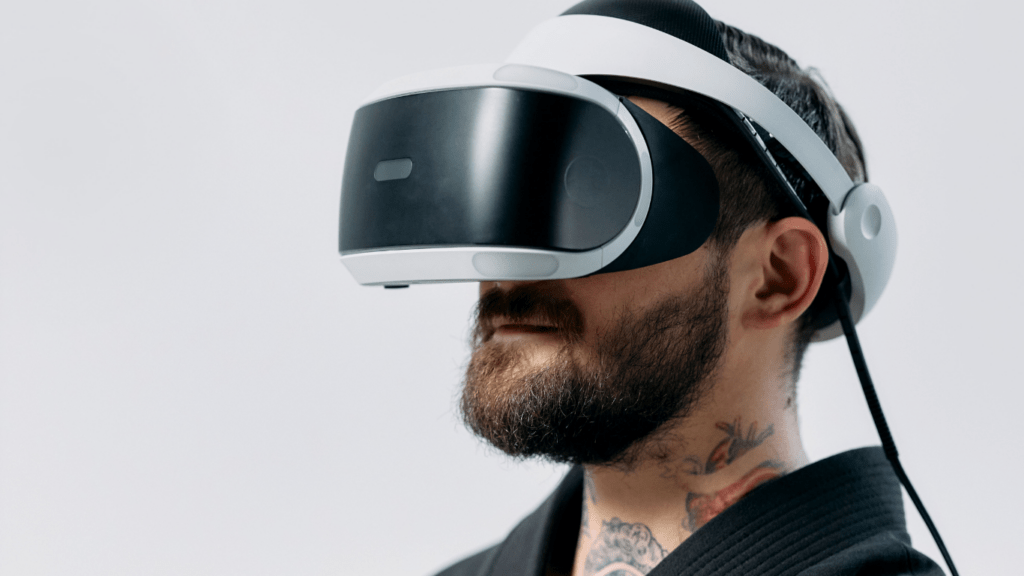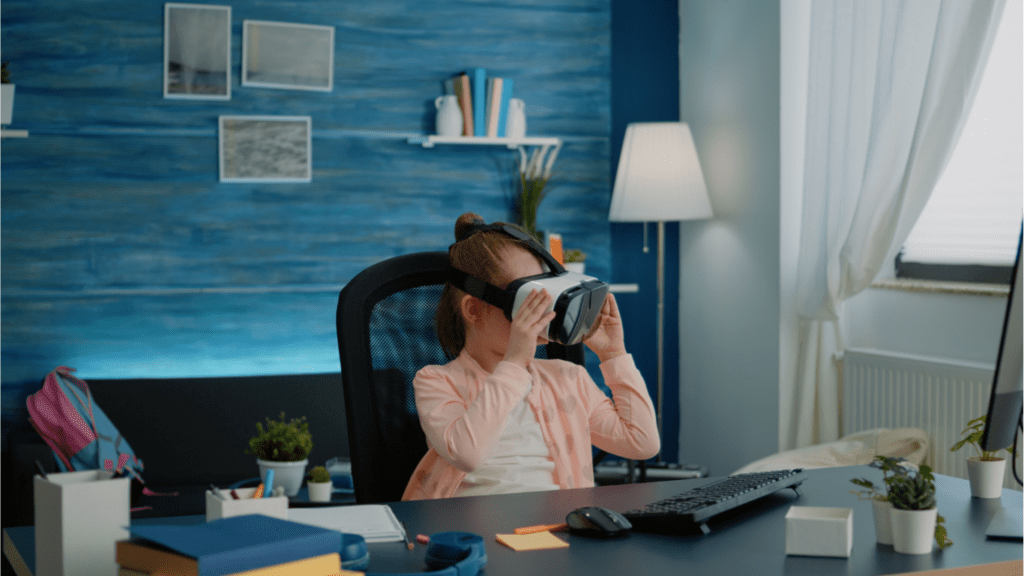Exploring Augmented Reality in Art
Augmented Reality (AR) blends digital elements with the physical world, enhancing how we perceive and interact with art. This section examines AR’s evolution in art and its key components.
The Evolution of Art Through Technology
Art evolves as technology advances. Early digital art used computer graphics to create new forms. Interactive installations emerged, allowing viewers to engage directly with pieces.
AR takes this a step further by integrating real and virtual worlds. For instance, the 2017 “Mirage Detroit” exhibit transformed an abandoned building into an immersive art experience using AR.
Key Components of Augmented Reality in Art
AR in art relies on several components include:
- AR Devices: Smartphones, tablets, and AR glasses break barriers between physical and digital.
- Software: Apps and platforms like Artivive allow artists to overlay digital layers onto their works.
- Content: Digital elements include animations, 3D models, and soundscapes.
- Interactivity: Viewers interact with art through touch, movement, and gestures.
AR integrates these components to create immersive, interactive art experiences.
Benefits of Augmented Reality in the Art Scene
Augmented Reality (AR) is reshaping the art landscape by offering new ways to enhance the visitor experience and artistic expression.
Enhanced Visitor Engagement
AR transforms how visitors interact with art exhibits. Viewers can use AR-enabled devices, such as smartphones, to access added layers of information and context.
For example, in museums, AR apps provide detailed information about an artwork’s history, creator, and significance, often through engaging multimedia like audio and video. This added layer of interaction keeps visitors engaged and educated, making the art experience more immersive and memorable.
Expanded Artistic Expression
Artists leveraging AR can push the boundaries of traditional mediums. They can incorporate 3D elements, interactive animations, and virtual installations into their work.
For instance, digital artist KAWS has used AR to create virtual sculptures that coexist within physical spaces. These innovations enable artists to explore new concepts and forms, offering audiences unique experiences that blend the digital and physical worlds seamlessly.
Examples of Augmented Reality in Art Exhibitions
Augmented Reality (AR) transforms art exhibitions by merging digital enhancements with physical displays, creating immersive and interactive experiences for visitors.
Notable AR Art Installations
Several notable AR art installations demonstrate how technology enhances the art experience. “Mirage Detroit,” an AR installation by artist Doug Aitken, transformed a historic Detroit bank into an interactive art space. Using smartphones, visitors experienced dynamic visual elements that interacted with the physical environment, blending history and modernity.
Another example is the AR-enhanced “Unseen Art” project by Marc Dillon, which allows visually impaired individuals to ‘see’ art through touch. AR-generated 3D models of classic artworks can be felt, offering a new sensory dimension to the art experience.
Additionally, the “The Art of Burning Man” exhibit in the Smithsonian American Art Museum used AR to bring the festival’s ephemeral sculptures to life. Visitors accessed digital reconstructions and animations of the artworks through their devices, experiencing the fleeting nature of Burning Man in a lasting, interactive format.
Impact on Audience Perception and Interaction
AR significantly impacts audience perception and interaction by adding layers of digital information to the physical artwork. Through AR-enabled devices such as smartphones, visitors engage with art in real-time, accessing details, historical context, and animations that deepen their understanding and appreciation.
Audiences find AR in art exhibitions provides a more engaging and personalized experience. Interactive features such as touch-responsive elements and 3D animations encourage active participation. This engagement can foster a stronger emotional connection to the artwork, making the visit memorable.
Moreover, AR enables inclusivity by accommodating diverse visitor needs. Features such as audio descriptions, tactile feedback, and real-time translations ensure that exhibitions are accessible to a broader audience.
Augmented Reality revolutionizes art exhibitions, offering visitors enhanced, interactive, and inclusive experiences. This fusion of digital and physical realms continues to push the boundaries of how art is experienced and appreciated in modern times.
Challenges and Considerations
Implementing Augmented Reality (AR) in the art world brings unique challenges and considerations. These factors affect how effectively AR can enhance the art experience.
Technological Limitations
- AR technology relies heavily on robust hardware and software.
- Despite advancements, not all devices support high-quality AR experiences.
- Many visitors don’t have access to AR-capable smartphones or tablets.
- Network connectivity issues can also disrupt AR integration in exhibits.
- Ensuring smooth, immersive experiences requires addressing these limitations.
- Artists and museums must allocate resources for AR hardware and software.
- They might face high costs and the necessity for ongoing technical support.
- Updating and maintaining AR applications is another challenge.
- Regular updates are essential to address bugs and improve user experiences.
- Without them, AR experiences can become frustrating rather than engaging for visitors.
Artistic Authenticity Concerns
AR’s integration into the art world raises questions about artistic authenticity. Purists argue that digital enhancements might distort the original intent of an artwork. For them, the intrinsic value and authenticity lie in the untouched, physical piece.
Balancing innovation with respect for artistic integrity is crucial. While AR adds interactive elements and layers, it’s vital to preserve the core essence of the artwork.
Clear guidelines and collaboration between artists and tech developers help maintain this balance. Artists need to be involved in how AR elements get incorporated to ensure their vision isn’t compromised.
Another aspect is the audience’s perception. With AR, there’s a risk of the digital overshadowing the physical. The focus might shift from appreciating the original work to exploring the digital enhancements.
Museums and galleries must carefully design AR experiences to complement, not overpower, the art. This approach helps maintain the artwork’s authenticity while utilizing AR’s benefits.
Future Prospects of Augmented Reality in Art

Technological Advances and Artistic Innovations
Technological advances in AR continue shaping artistic innovations. For example, AR headsets like Microsoft’s HoloLens and the Magic Leap One create new interactive art experiences. These devices offer artists tools to blend physical and digital art seamlessly, enhancing viewer engagement.
Improvements in AR software contribute to more sophisticated and accessible art applications. Platforms such as Arty AR and Artivive allow artists to add layers of digital information, animation, and sound to their physical artworks.
This integration makes it possible to transform traditional exhibits into immersive experiences, expanding the boundaries of artistic expression.
Advances in mobile AR technology also play a significant role. High-resolution displays and improved processing power in smartphones and tablets make AR art more accessible to the general public. With apps like Google’s ARCore and Apple’s ARKit, audiences can interact with augmented art right from their devices.
Emerging technologies such as 5G networks further enhance AR applications by providing faster, more reliable connections. Artists can create more complex and data-intensive AR experiences without performance issues, bringing a new level of dynamism to exhibitions.

 Anna Freehill, a key contributor to Avant Garde Artistry Hub, plays a vital role in shaping the platform’s vision. As an author and collaborator, she helps bridge the worlds of art and technology, offering insightful articles that guide artists through the rapidly evolving creative landscape. Anna’s dedication to highlighting art's therapeutic value has contributed to the platform’s focus on mental and emotional well-being through creative expression.
Her involvement in building Avant Garde Artistry Hub has been instrumental in providing valuable resources to artists seeking to enhance their careers. Whether through her writing on business strategies or her support in platform development, Anna is committed to fostering a space where artists can thrive and embrace the future of art.
Anna Freehill, a key contributor to Avant Garde Artistry Hub, plays a vital role in shaping the platform’s vision. As an author and collaborator, she helps bridge the worlds of art and technology, offering insightful articles that guide artists through the rapidly evolving creative landscape. Anna’s dedication to highlighting art's therapeutic value has contributed to the platform’s focus on mental and emotional well-being through creative expression.
Her involvement in building Avant Garde Artistry Hub has been instrumental in providing valuable resources to artists seeking to enhance their careers. Whether through her writing on business strategies or her support in platform development, Anna is committed to fostering a space where artists can thrive and embrace the future of art.